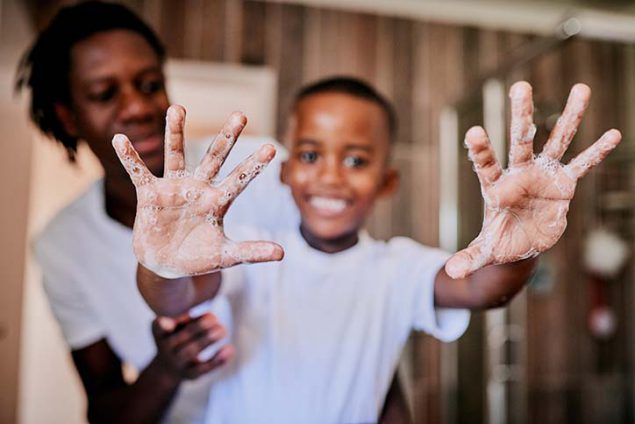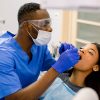- Empty cart.
- Continue Shopping
The Importance of Proper Handwashing: A Crucial Defense Against Disease

In our fast-paced world, we often overlook the simplest yet most effective means of preventing illness: proper handwashing. This seemingly mundane task is a cornerstone of good hygiene and a powerful defense against the spread of diseases.
The Fundamental Role of Handwashing
1. Disease Prevention
The primary purpose of handwashing is to prevent the transmission of pathogens, such as bacteria and viruses, from one person to another. Our hands are constant contact points for various surfaces, including those contaminated with harmful microorganisms. Consequently, failing to wash our hands regularly can lead to the transfer of these pathogens to our mouth, nose, and eyes, making us susceptible to infections.
2. Personal Health
Proper handwashing is not only about safeguarding others; it is also crucial for maintaining our own health. By cleansing our hands, we reduce the likelihood of becoming ill ourselves. Illnesses like the common cold, influenza, and gastrointestinal infections can often be traced back to inadequate hand hygiene.
3. Community Well-being
In a broader context, handwashing plays a pivotal role in community health. When individuals prioritize hand hygiene, they contribute to reducing the overall burden of illness on society. This, in turn, can alleviate the strain on healthcare systems and improve public well-being.
The Correct Handwashing Technique
Effective handwashing requires more than just a quick rinse under running water. To maximize its benefits, it is essential to follow a thorough and systematic approach:
4. Wet Your Hands
Begin by wetting your hands thoroughly with clean, running water. The temperature of the water is not as critical as some might think. Both cold and warm water are effective, provided you use soap and follow the proper technique.
5. Apply Soap
Next, apply an ample amount of soap to your hands. Quality liquid or bar soap works equally well. The choice of soap should not be a hindrance to good hand hygiene.
6. Lather and Scrub
Rub your hands together to create a rich lather. Ensure you cover all surfaces, including the back of your hands, between your fingers, and under your nails. This step should take at least 20 seconds to be truly effective. A useful trick is to hum the “Happy Birthday” song twice while scrubbing to time yourself.
7. Rinse Thoroughly
Rinse your hands under clean, running water. As you do so, keep your hands pointed downwards to allow the soap and contaminants to flow away from your skin.
8. Dry Properly
After rinsing, use a clean towel or an air dryer to dry your hands thoroughly. Avoid using your clothing or a shared towel, as these can reintroduce germs to your hands.
9. Use a Towel to Turn Off the Faucet
If you are in a public restroom, use a paper towel to turn off the faucet and open the door. This minimizes contact with potentially contaminated surfaces.
The Role of Soap in Handwashing
10. Why Soap Matters
Soap is not just an accessory in handwashing; it is a critical component. Soap molecules have a unique structure that allows them to interact with both water and oils. This property enables soap to break down and remove dirt, grease, and microorganisms from your hands more effectively than water alone.
11. Antibacterial vs. Regular Soap
Contrary to popular belief, antibacterial soap is not always necessary for effective handwashing. Regular soap, when used correctly, is highly efficient at removing bacteria and viruses from your skin. In fact, overuse of antibacterial soap may contribute to antibiotic resistance, making it less effective against harmful bacteria.
When Should You Wash Your Hands?
12. Key Moments for Handwashing
Handwashing should be a routine practice, but there are specific moments when it becomes especially crucial:
- Before Eating: Prior to every meal, it is essential to wash your hands to prevent contaminating your food.
- After Using the Restroom: This is a non-negotiable rule. Proper handwashing after using the restroom is essential for personal hygiene and to prevent the spread of fecal-oral diseases.
- After Coughing or Sneezing: Covering your mouth and nose when coughing or sneezing is essential, but washing your hands afterward is equally important to prevent the spread of germs.
- After Handling Waste: Whether it’s garbage, pet waste, or changing a baby’s diaper, always wash your hands thoroughly.
- After Touching High-Touch Surfaces: Surfaces like doorknobs, handrails, and elevator buttons can harbor germs. Make it a habit to wash your hands after touching these surfaces.
- Before and After Caring for Someone Who is Sick: If you are a caregiver, proper handwashing is vital to protect both yourself and the person you are caring for.
- After Touching Animals: Whether you have pets or encounter animals in a public setting, wash your hands to avoid potential zoonotic diseases.
13. Hand Sanitizers as a Temporary Solution
In situations where soap and water are not readily available, hand sanitizers with at least 60% alcohol can be used as a temporary measure. However, they are not a complete substitute for proper handwashing and should be used sparingly.
Common Handwashing Mistakes to Avoid
14. Rushing the Process
One of the most common mistakes people make is rushing through handwashing. Effective handwashing takes time and thoroughness, as highlighted earlier. Skipping steps or not spending enough time scrubbing can render the process ineffective.
15. Neglecting Nail Hygiene
Your fingernails can harbor dirt and germs. Be sure to clean under your nails and around the cuticles during handwashing.
16. Using Hot Water Exclusively
Hot water can be harsh on your skin and may discourage frequent handwashing. As mentioned earlier, both cold and warm water, when used with soap, are effective for proper handwashing.
17. Overusing Hand Sanitizers
While hand sanitizers have their place, they should not be the primary means of hand hygiene. Overusing them can dry out your skin and potentially lead to dermatological issues.
Teaching Handwashing to Children
18. Start Early
Instilling good handwashing habits in children is essential. Start teaching them at a young age and make it a fun and engaging activity.
19. Use Visual Aids
Visual aids, such as posters or pictures, can help children understand the proper handwashing technique. Demonstrate the process to them and encourage them to mimic your actions.
20. Supervise and Remind
Young children may require supervision to ensure they are washing their hands correctly. Remind them regularly, especially before meals and after using the restroom.
In conclusion, Proper handwashing is a simple yet potent weapon against the spread of diseases. It not only protects us but also contributes to the overall well-being of our communities. By adhering to the correct handwashing technique, using soap effectively, and knowing when to wash our hands, we can reduce the risk of illness and create a safer, healthier world for everyone. Remember, good hand hygiene is in your hands—literally.








